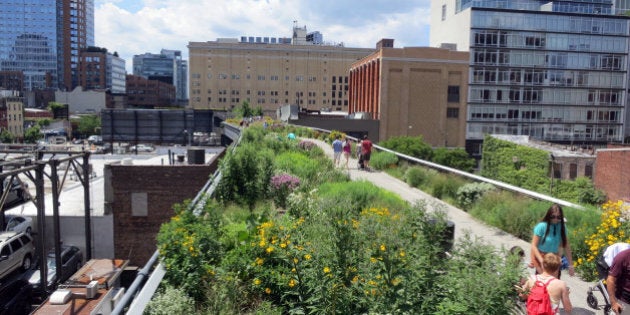

Although it might be hard to see how, small things we all do every day can have a huge impact on social and environmental development and change. From turning littering into a crime, to discouraging younger generation from smoking, chipping away at a bad situation can have amazing results.
Separating the north and south, the Cheonggyecheon stream in Seoul, South Korea, was originally built to provide drainage for the city. In the 1940's, the population became so large that shanty towns developed around the stream and it quickly became polluted. The solution? Cover it in concrete. In 2003 city planners decided to revitalise the area from concrete highway to a green space. It's now a lush sanctuary for wildlife and even helps to cool the city. A true urban oasis.
A cold winter in 1952 saw people burning large amounts of coal in their homes, while factories emitted poisonous particles into the air. The smog became so thick that people couldn't see their feet as they walked along the street. About 4000 people are known to have died, and press reports claimed that cows were asphyxiated in the fields. Following the devastation a series of laws were brought in, including the Clean Air Acts of 1956 and 1958. They banned the emissions of black smoke and ruled that residents of urban areas and operators of factories must make the shift to smokeless fuels.
Historically, Fresh Kills Park on Staten Island, New York, consisted of tidal creeks and coastal wetlands. It was occupied by Native Americans and used as rural agricultural homesteads. However, in the mid 1900s the city acquired the land for use as a landfill and it quickly became an island of waste and refuse. Piles of garbage were transported there by barge and truck to create mounds rising approximately 200 meters above sea level. At it's peak, 29,000 tonnes of garbage were delivered daily, making it the world's largest landfill. Fresh Kills is now the biggest park in New York City - almost three times the size of Central Park. It will be opened in phases through to 2036, and is a mix of natural and engineered beauty, providing New Yorkers and tourists a place to escape.
It was known as sh*t mountain by the locals. A stinking, towering pile of garbage leaking toxic runoff into Tel Aviv's natural waterways. Today it stands as Israel's iconic Ariel Sharon Park, as well as one of the world's largest recycling facilities. A new bioplastic layer, which was developed by architect and urban planner Peter Latz, allowed plants and animals to flourish once more by preventing methane from escaping the surface of the ground. The site is now responsible for sorting waste, construction debris and landscape matter and transforming it into fuel, fertiliser, electricity, water for irrigation and even garden furniture.
The New York City High Line is a linear park built on a disused railway line, which runs above the streets on Manhattan's West Side. The High Line railway was built in 1934 to lift train traffic into the air to reduce the danger of railways running through the busy industrial district. The rise of interstate trucking in the 1950's saw railway traffic decrease, and the High Line fell into disuse in 1980. The transformation of the line into an urban garden was a laborious process, entailing years of planning, community input and design. Inspired by the self-seeded landscape that grew on the railway over the years, designers chose shrubs and grasses as the primary flora to breathe life into the urban walkway.
On the site of the former Sydney Brickworks, Sydney Park is the third largest park in the inner city, but it wasn't always the urban green space it is today. In the early 20th century, the rich soil and clay beds made prime real estate for brick, pottery and tile works, and the land quickly turned into a dry, gaping patch of dirt with deep pits from which resources were extracted. In 1948, the pits became a waste depot used by the City of Sydney council, and household rubbish was dumped there until the mid seventies. The tip was eventually closed, and a layer of soil and building materials were placed over the former brick pits to transform it into the inner city oasis of lush grass, landscape gardens, rolling hills, pathways and wetlands.
For more expert entrepreneurial tips and insights, the latest news on technology and business trends, and all the news about The Venture competition head to theventure.com